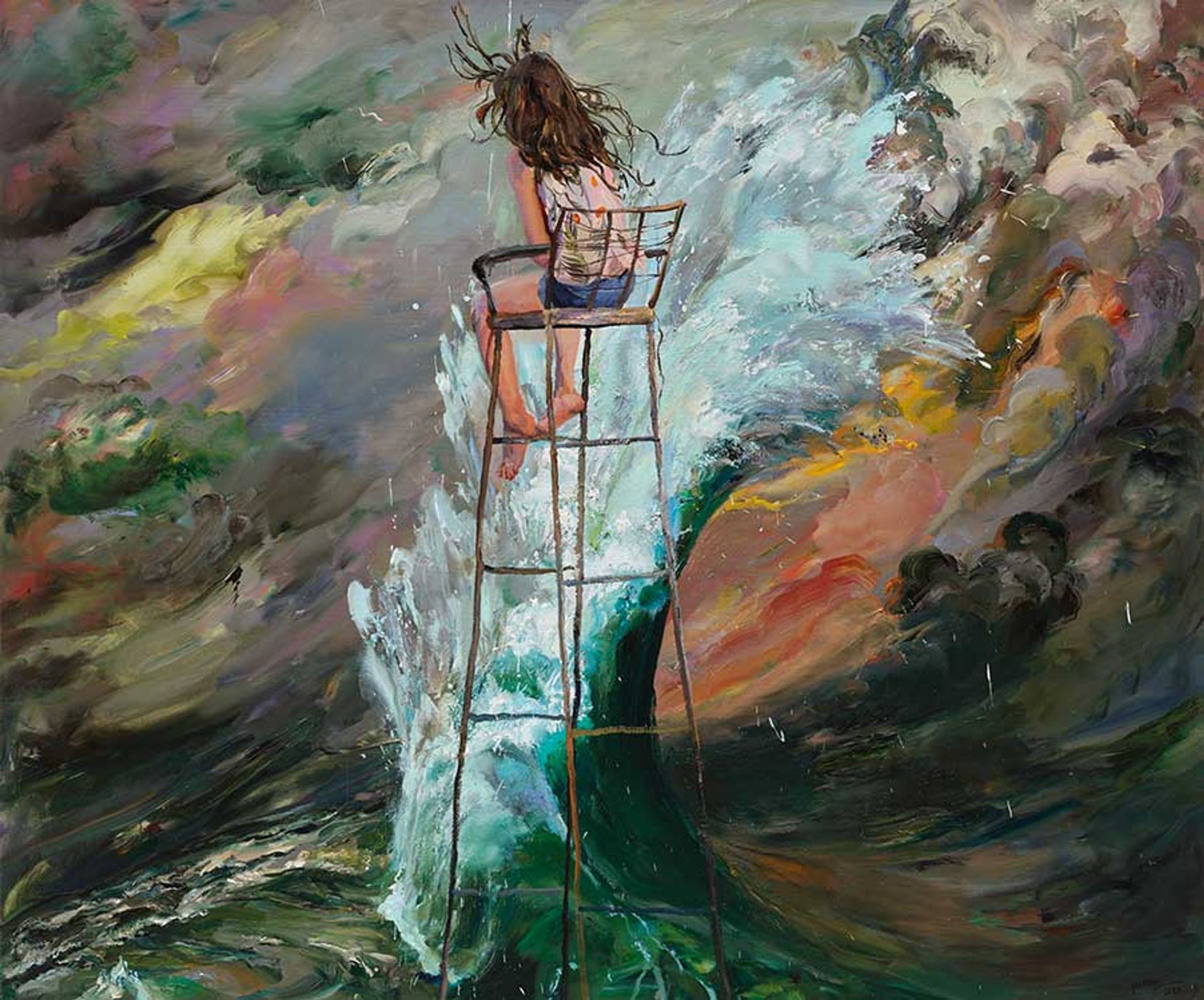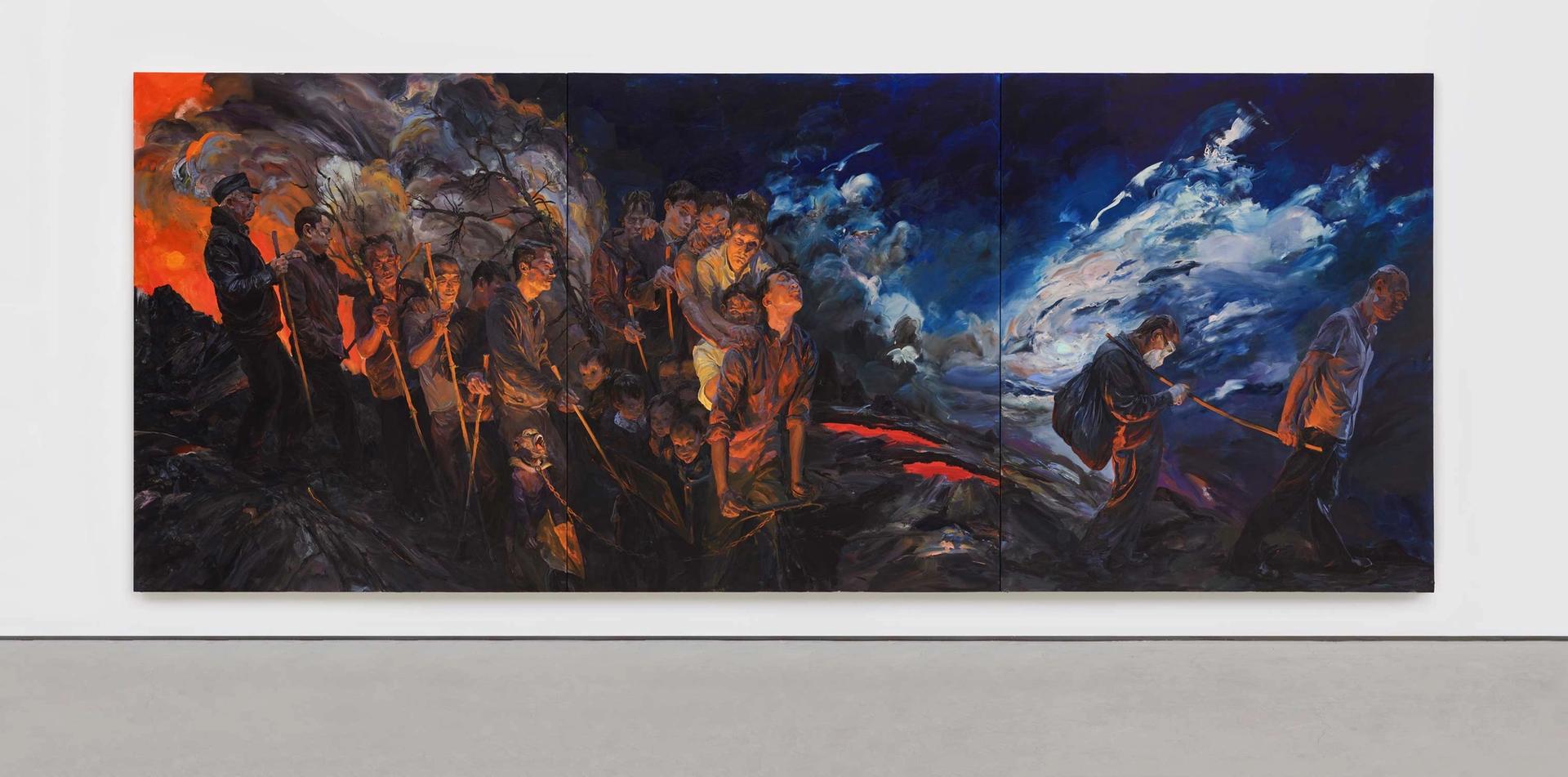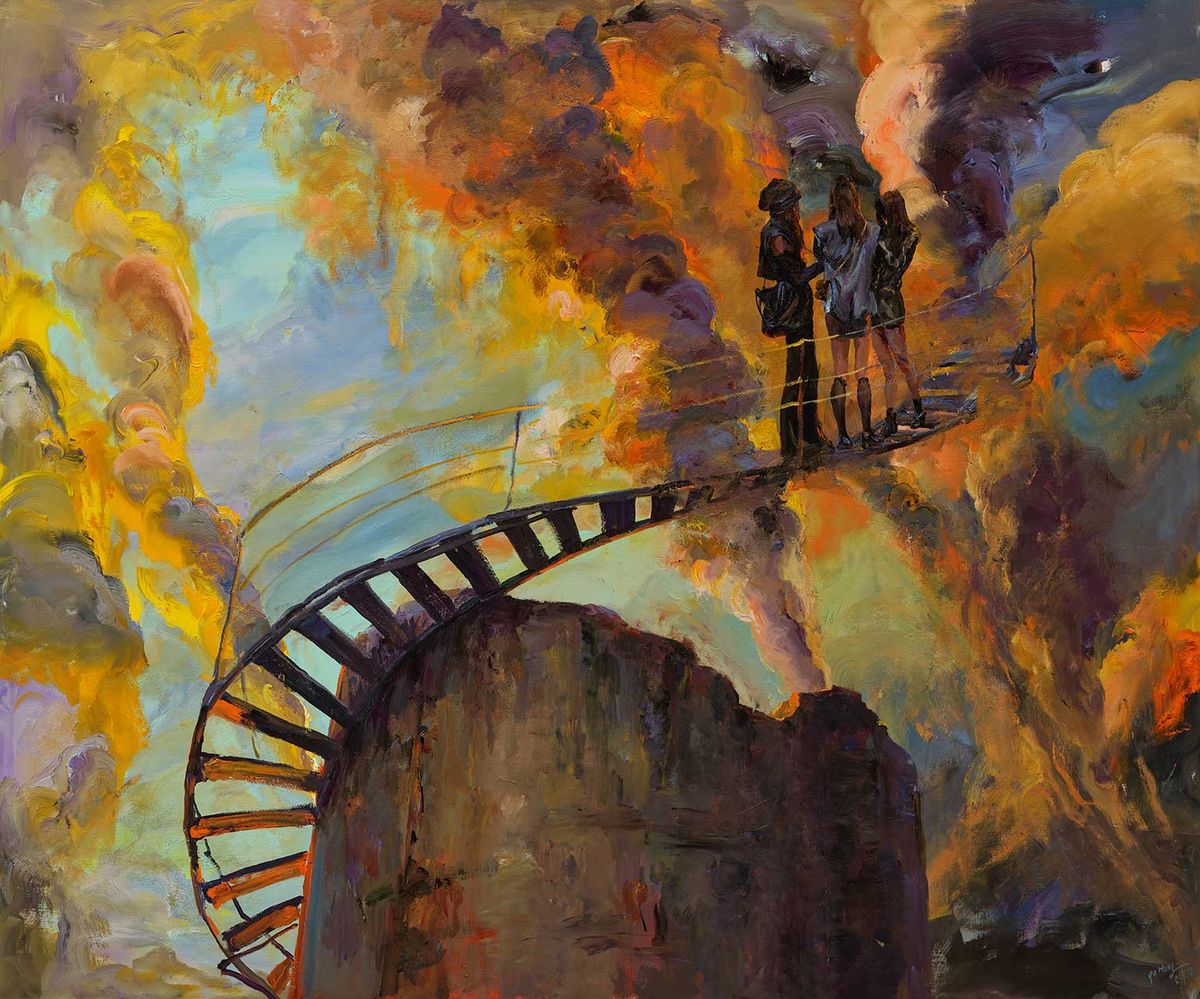Yu Hong’s art has always been grounded in the world around her. With Bible-sized themes and a social realist’s eye, the painter has limned an evolving psychological portrait of post-reform China across the last three decades and counting, cementing her status as one of the country’s most accomplished artists in the process. But while preparing to unveil a new and surprisingly introspective body of work at Lisson Gallery in London, the 58-year-old was feeling at sea.
Islands of the Mind (until 9 November), like her 2023 presentation at the Savannah College of Art and Design Museum of Art, Georgia, features a suite of huge, allegorical paintings informed by masterpieces of art history. That earlier show saw the artist riffing on multiple forebears, including Théodore Géricault, El Greco and Edvard Munch, but this time around the influence on her new works is confined to one source: the Swiss Symbolist painter Arnold Böcklin’s Island of the Dead (several versions, 1880-1901), an eerie image originally commissioned to memorialise the late husband of a patron, who would “be able to dream [herself] into the world of dark shadows” through it, the artist wrote to her.

Island of Expectation (2024); people in precarious situations are a recurring motif in the artist’s work
© the artist, courtesy of Lisson Gallery
“When I saw Böcklin’s work, I knew I would paint islands,” Yu Hong, who splits her time between New York and Beijing (and is referred to in all contexts by her full name), says of an encounter with the painting at the Metropolitan Museum of Art in New York in 2023. In Böcklin’s cryptic depiction of a shrouded boatman ferrying a lone casket toward an islet inset with ruins, she recognised something unexpected: a metaphor for the fractured human psyche in a post-pandemic world. One of the new paintings, Island of Life (2024), shows a pair of water-locked lovers lounging amid swans, cranes and an Edenic apple tree; another, Metropolis Island (2024), depicts a trio of city kids climbing a staircase to an ominous orange sky above. “Everybody has an island in their heart,” the artist says.
Yu Hong is a towering figure in her home country—the subject of major exhibitions at the UCCA Center for Contemporary Art in Beijing, the Long Museum West Bund in Shanghai and others, and a prominent presence in the “New Generation” of artists who redefined figuration in 1990s China. “There is not a single other woman realist painter that comes close to her prestige and achievement,” says Alexandra Munroe, the senior curator of Asian art at the Solomon R. Guggenheim Museum. Munroe worked with Yu Hong on an acclaimed show in Venice, opened concurrently with this year’s edition of the Biennale, that features a new series of paintings tracing humanity’s lifecycle, from birth to death, installed in the Chiesetta della Misericordia, a deconsecrated 10th-century church.
Geographic disconnect
Yet to the rest of the international art trade, Yu Hong’s work is a lesser-known commodity—and even that description may be overstating the awareness of her practice outside the nation of her birth.

Yu Hong’s mysterious, unsettling tryptich Night Walk (2023), focused on a group of people, eyes closed, marching through a burning landscape, references Pieter Bruegel the Elder’s The Blind Leading the Blind (1568)
© the artist, courtesy of Lisson Gallery
Islands of the Mind marks Yu Hong’s first-ever solo exhibition in London, as well as her first one-person dealer show outside of East Asia since 2006, when she showed at Galerie Loft in Paris. Her work has only been offered ten times at a Christie’s, Sotheby’s or Phillips auction in New York, London, Hong Kong, Paris or Milan after 2014, according to data from the London-based analysis firm ArtTactic—and on six of those occasions the work in question sold for less than the midpoint of its pre-sale estimate range. Her top price among this group of lots is the HK$1,625,000 (around $206,000, with fees) paid for Scorching Sun (1991), a largely greyscale depiction of multiple young women casually socialising in an undefined space, at a 2015 Sotheby’s sale in Hong Kong.
“In many countries, there is a strong internal market that pushes prices high. This can be a problem when the artist is ready to be contextualised internationally,” says Greg Hilty, a partner at Lisson Gallery who has worked with Yu Hong since the gallery began representing her in 2022. (Lisson has also represented her husband, the fellow Chinese art star Liu Xiaodong, since 2012.) “Her prices are far from inflated, however, and there is more flow between Asian and Western markets than there was a decade ago. Museums are showing and buying her work more, and private buyers are following,” he adds.
Hilty says the paintings in Islands of the Mind range in price from $200,000 to $1m. Those figures are consistent with Yu Hong’s prices in China, though pieces have been increasingly hard to come by for collectors in recent years. The dearth is due in large part to her “outsized role in Chinese art history”, says the Beijing-based adviser Kwanyi Pan. “It’s very difficult to get the really good pieces because they are always limited to institutions,” she adds, noting the long list of prominent museums in China that have acquired the painter’s work.
But Yu Hong’s global profile has grown in recent years, and so too has the scope of her vision. Whereas the painter once drew first and foremost on the faces and places of mainland China, the shows in Venice and Savannah found her exploring a fantastical space amalgamated from internet images and scenes plucked from the Western art historical canon.
“Her subject matter has enlarged,” says Munroe, who coined the term “supernatural realism” to describe Yu Hong’s evolved style and its broader, humanistic aims. “She’s not just painting about China anymore.”
Islands of the Mind furthers this trend, and it may be her most ambitious effort yet. “Yu Hong is an artist of exceptional vision and talent who’s at the top of her game now,” Hilty says. No better time, then, for London’s spotlight to swing her way.
- Islands of the Mind, until 14 December, Lisson Gallery, London


